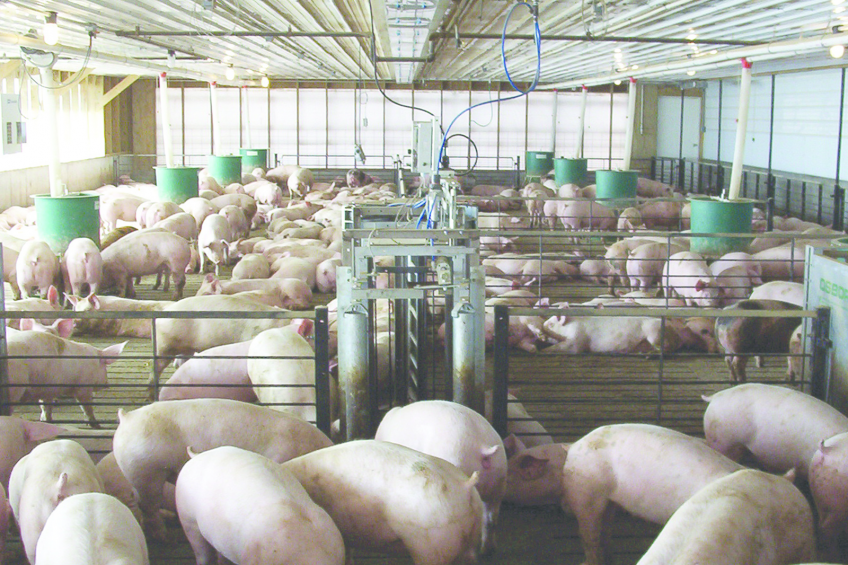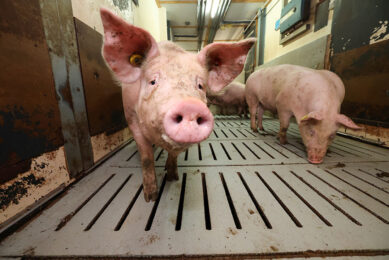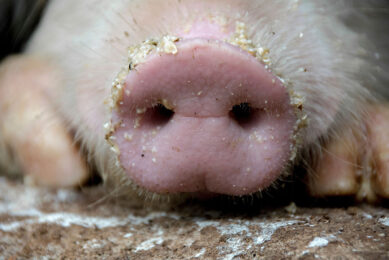Accurate data gives confidence to pig farmers

Precision agriculture is moving ahead very rapidly. Automatic data acquisition on an individual level increasingly allows producers to know more about what each animal eats and how it grows. This, in turn, can lead to very targeted and precise feeding and nutrition management.
These days, questions are increasingly being asked about precision agriculture. There is precision agriculture on the crop side, with GPS, targeted seed and spray applications, and yield mapping, which minimises variation and optimises high yields across entire fields.
For commercial livestock production, and swine production in particular, equipment suppliers have been doing a lot to accomplish these similar results. For example, equipment is already available that can identify when an animal eats, for how long, how much, and automatically measures individual body weights. With this data, it is possible to calculate an animal’s average daily gain, feed conversion, and rank him against his pen-mates. The key is automatic data collection with very little human labour and intervention.
Weighing and tracking feed consumption
Manual weighing of a population at certain intervals, for example, every week or every two weeks, unfortunately involves a significant investment in manual labour. Referencing Dr Temple Grandin’s work, handling and transporting are stressors for animals, especially when the participants in weighing are not the daily caregivers. Feed consumption is manually tracked by keeping the subject animal in a stall. One feed space is needed for each animal. However, when animals are in a pen with a commercial feeder, it is impossible to determine from which feed space they have eaten and how much.
Figure 1 – Sample data set showing information for an individual animal collected by Feed Intake Recording Equipment.

Automatic weight collection
For nutrition and pharmaceutical (N&P) studies, researchers often want the results from the entire population, say 1,000-2,000 animals. The challenge, however, is, that there is really no cost-effective way to automatically measure individual feed consumption on that many animals. What is possible, however, is to obtain individual body weights without manual weighing of individual animals. Each individual’s body weight can automatically be measured and collected, which allows researchers to see patterns and make decisions.
For gestating sows in groups, animals are fed a limit diet, and usually bump-feed closer to parturition. It is more useful to match a ration type to a body condition score (BCS) and sow weight to optimise her performance. Automatic weight collection at the feeding station in gestation allows for the desired ration and amount to be fed to precisely match BCS and weight.
Currently, the tools available are:
- Automatic weighing and sorting scales with no radio frequency identification (RFID)
- Automatic body weight collection with scales on feed intake recording equipment
- Electronic sow feeder with integrated and automatic weight capture
Capturing feed consumption automatically
Feed delivered to the population can be an indicator of total feed consumed (allowing for some wastage), but doesn’t give insight into individual performance. Individual feed intake, collected via Feed Intake Recording Equipment (FIRE), allows researchers to compare results against pen-mates and barn-mates. Nutrition and pharmaceutical (N&P) studies focus on the effects of a variable on a statistical sample of the population. With genetic and N&P studies, the ad libitum feeding events collected via an automatic feeder simulate finishing performance. The advantage of individual animal performance measurements is that researchers can study the interactions between genetics and nutrition, without excluding the other. At least two diets can be studied, and different genetics can be analysed.
- Currently, the tools available are:
- Bin weighing
Automatic feed intake collection via feed intake recording equipment
Automatic data acquisition
Researchers want enough data points to analyse trends and make decisions quickly, thus saving research money. Accurate and automated data, with limited animal stress due to human intervention and environmental variables, gives higher confidence to the decision maker.
Still today, some researchers seem to be willing to use human labour to manually weigh pigs for body weight data, but this method does not capture data that could be gathered automatically at each feeding event. With the precise and automatic tools available today, it may be worthwhile and beneficial to use two automatic feeding and weighing systems per small pen (approximately 30 animals) to capture this data. The data collected could then easily be compared against the entire population to see how quickly a treatment impacts population health and performance.
Summary
Very seldom it is possible to do population testing in human or animal settings, and get cost-effective results. By utilising the available tools today, researchers can obtain more data from small groups, allowing animals to exhibit their natural behaviours and tendencies. This data gives greater confidence in findings, analysed results and conclusions.
Join 18,000+ subscribers
Subscribe to our newsletter to stay updated about all the need-to-know content in the pigsector, three times a week. Beheer
Beheer










 WP Admin
WP Admin  Bewerk bericht
Bewerk bericht